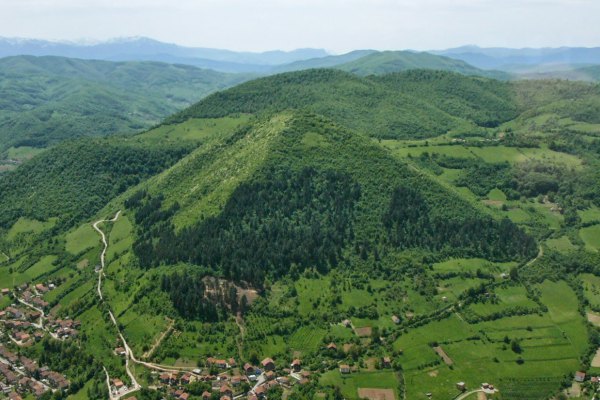Deep inside Bosnia, in a small town called Visoko, just 15 miles northwest of Sarajevo, stands the world’s largest and oldest ancient pyramid.
The pyramid sprang onto the world scene in October of 2005, when Semir Osmanagić, a Bosnian who lives in the United States and owns a successful metalworking shop, announced his discovery. The hill, named Visočica, is at the south end of Visoko and although it’s completely covered in trees and other greenery, two sides of it are indeed remarkably pyramid-like.
Carbon dating of organic fossils found inside the excavated chambers suggest the pyramids’ age to be approximately 30,000 years old (an error of +/- 400 years). Our current understanding puts the earliest human civilisations at 10,000 years ago.
Like the Egyptian Pyramids, the Bosnian ones orient to the cosmic north. But, they’re 15 times more accurate than the Pyramid of Giza, with an outstanding error of just 0 degrees and 12 seconds. The peaks of the Sun, Dragon, and Moon also form a perfect equilateral triangle.
Overlapping layers of concrete on the surface of the Sun appear to be deliberate for structural integrity. Tests in Bosnian, Italian, and French labs confirm the concrete is ‘not of natural origin’, and has a ‘strength and water resistance superior to known material’.
Dr. Osmanagic claimed that, over the centuries, some of the pyramids had lost their shape and that the material covering the Pyramids today did not allow to appreciate their geometry, so it was necessary to properly excavate them.
Mainstream scholars such as Curtis Runnels, an American expert on prehistoric Greece and the Balkans from Boston University, claimed that the people who inhabited Bosnia and Herzegovina in the past, were a primitive people who were small in number and who “did not have the tools or skills to engage in the construction of monumental architecture.”
But Runnels, for example, is clearly underestimating the ancient people that lived in these areas thousands of years ago.
One clear example is the Vinca Culture, an ancient people who occupied the region of Southeastern Europe (i.e. the Balkans) corresponding mainly to modern-day Serbia but also parts of Romania, Bulgaria, Bosnia, Montenegro, Republic of Macedonia, and Greece. This ancient culture, which existed around 10,000 years ago created the so-called Vinča symbols, which some believe are the earliest form of proto-writing. The Vinča culture also provides the earliest known example of copper metallurgy.
Statistically, they seem unlikely to be natural. Scientifically, they seem too dubious to be true. The world isn’t going to agree anytime soon. You must see the Bosnian Pyramids with your own eyes and make up your mind.




